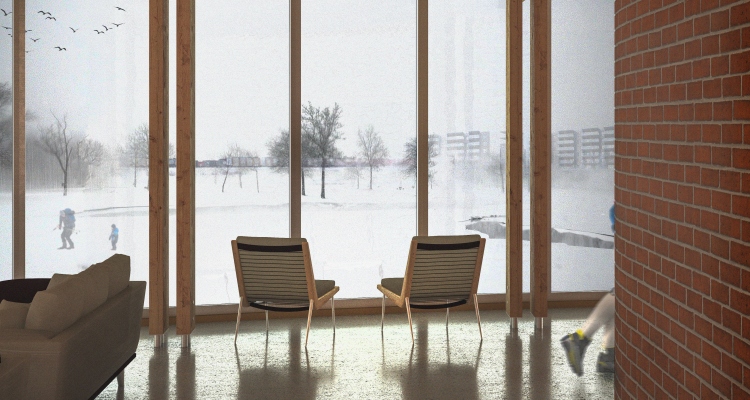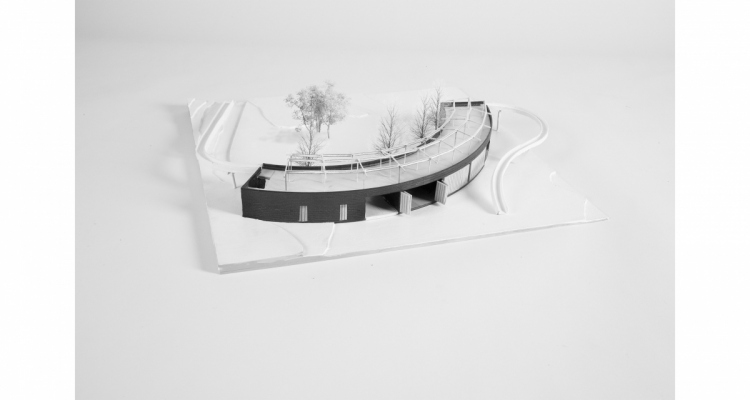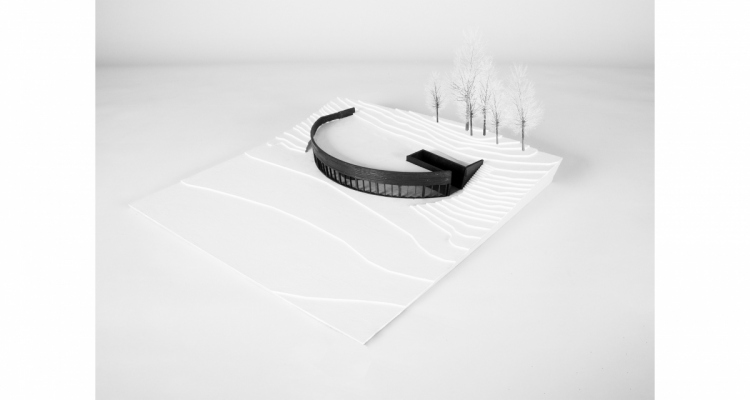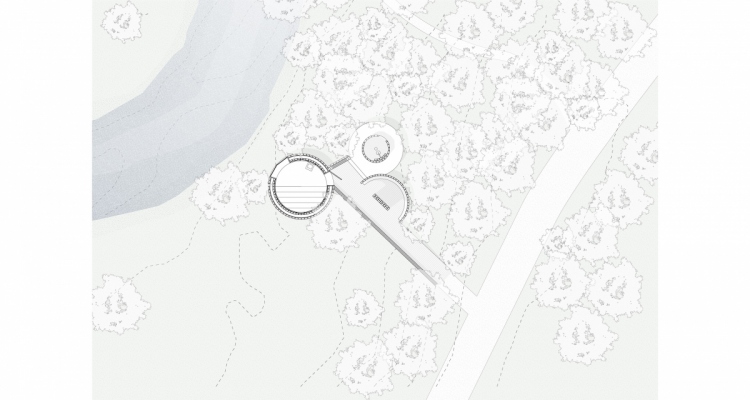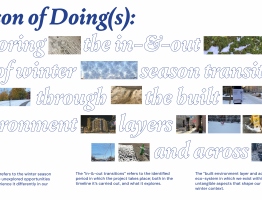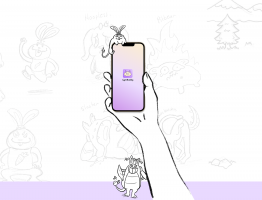Diploma project
Autumn 2022
Institute of Architecture
Sports and physical activities inevitably play important roles in the society. It has the ability to let people communicate and interact, regardless of language barriers, reiligion or socio-economic background. Physical activities are also closely related to bigger themes such as public health, integration and inclusion. My impression is that easy accesible facilities for activity not only improves the public health. It also holds a huge potential for contributing to attractive, social sustainable neighborhoods.
My diploma project is a fragmented translation of the traditional, norwegian typology, the markastue, introduced to an urban setting. It is a prototype for how activity can be implemented to urban neighborhoods to improve and strengthen them. The project aims to create social arenas with a strong local identity and focuses on low threshold access to local activities using both existing and new structures. With the cultural history of cross country skiing as a basis, the program takes advantage of the landscape, nature and urban context through all seasons.
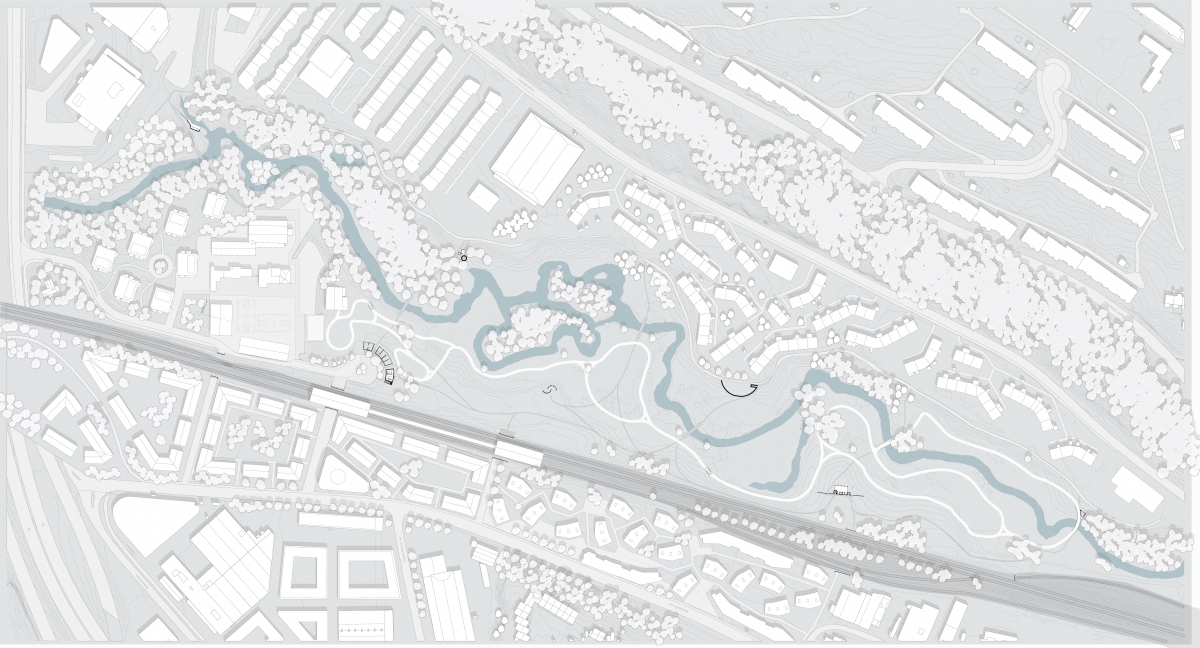
The site for the case study is Breivoll - one of the remaining plots for housing development in Oslo, located at the entrance of Groruddalen. The area is dominated by post industrial buildings for production and storage, but the area is also characterized by a huge, green lunge, with a rich, natural wildlife along the Alna river.
Through a reading of the constraints and possibilities that the natural environment builds up, the architectural program is distributed as seven interventions along the edge of the whole site. Each building acts as a mediator between its local neighborhood and the network of activities. They represent the intention of reaching out to a wide range of people, as an open, inviting space. A place to gather in the local community, and provide a low threshold, cheap and inclusive offer for introduction to skiing and outdoor physical activities.
As a prototype, this translation of the marka cabin explores some aspects that can be taken into consideration when implementing activities to neighborhoods - such as accessebility, natural elements, potential reusable structures and local heritage. The project serves as a platform for physical activity itself, but also as a gate, encouraging and motivating the visitor to seek the opportunities in Marka.
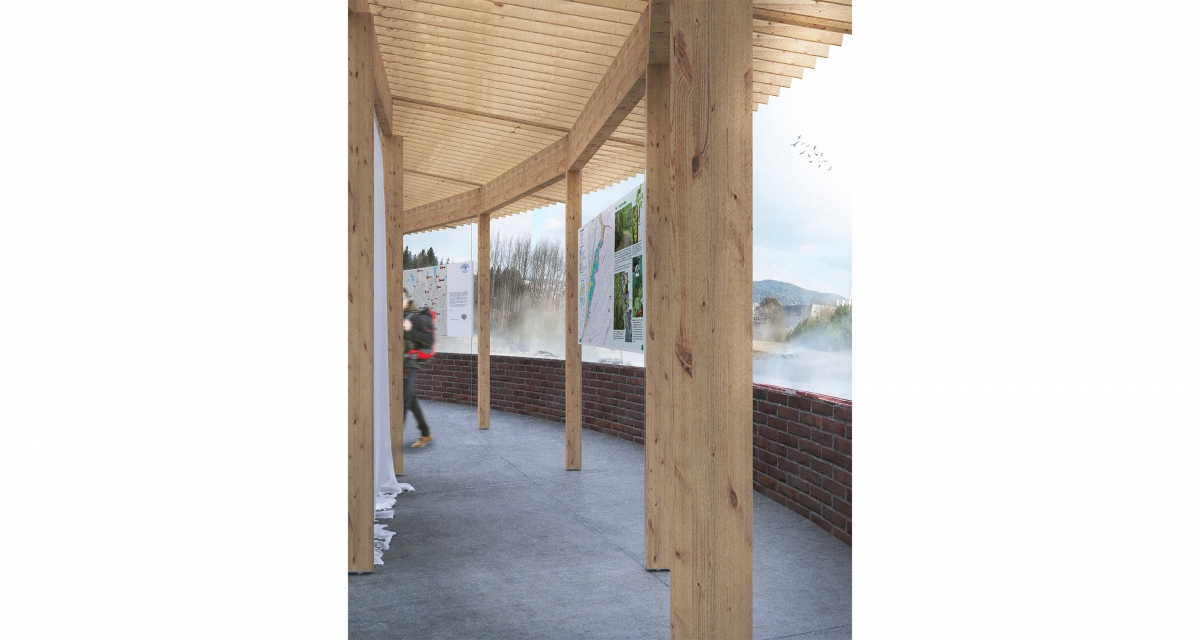
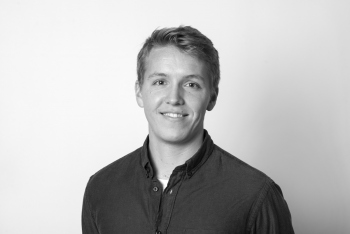
Kristoffer Frydenlund Sælid / kristoffersaelid@hotmail.com
My diploma project is a fragmented translation of the traditional, norwegian typology, the markastue, introduced to an urban setting. It is a prototype for how activity can be implemented to urban neighborhoods to improve and strengthen them. The project aims to create social arenas with a strong local identity and focuses on low threshold access to local activities using both existing and new structures. With the cultural history of cross country skiing as a basis, the program takes advantage of the landscape, nature and urban context through all seasons.

The site for the case study is Breivoll - one of the remaining plots for housing development in Oslo, located at the entrance of Groruddalen. The area is dominated by post industrial buildings for production and storage, but the area is also characterized by a huge, green lunge, with a rich, natural wildlife along the Alna river.
Through a reading of the constraints and possibilities that the natural environment builds up, the architectural program is distributed as seven interventions along the edge of the whole site. Each building acts as a mediator between its local neighborhood and the network of activities. They represent the intention of reaching out to a wide range of people, as an open, inviting space. A place to gather in the local community, and provide a low threshold, cheap and inclusive offer for introduction to skiing and outdoor physical activities.
As a prototype, this translation of the marka cabin explores some aspects that can be taken into consideration when implementing activities to neighborhoods - such as accessebility, natural elements, potential reusable structures and local heritage. The project serves as a platform for physical activity itself, but also as a gate, encouraging and motivating the visitor to seek the opportunities in Marka.


Kristoffer Frydenlund Sælid / kristoffersaelid@hotmail.com
